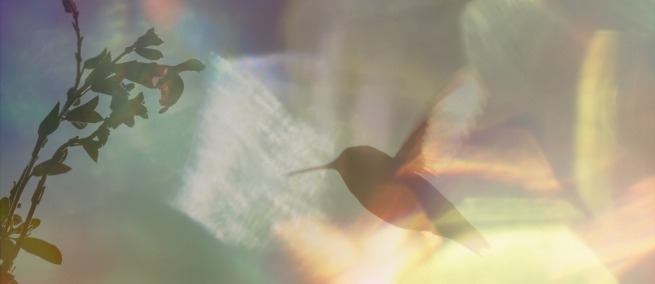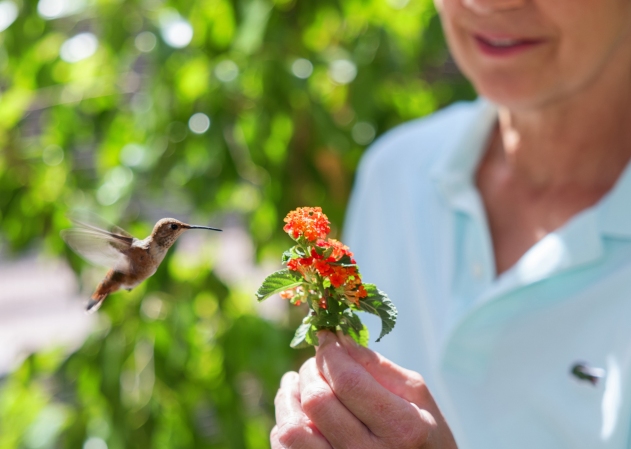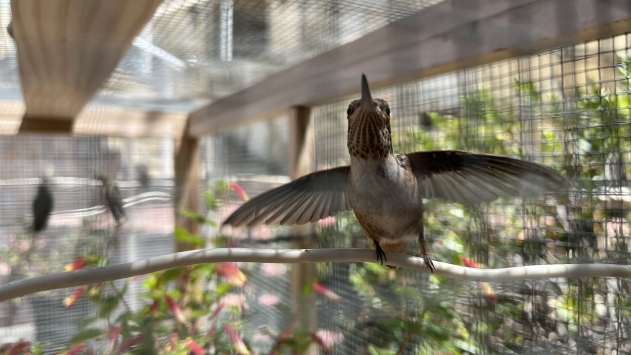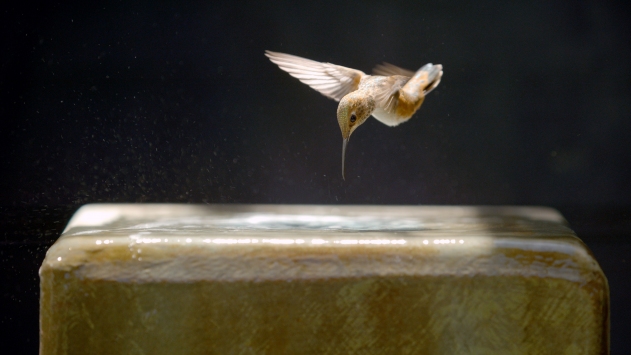
Emmy-nominated director and writer Sally Aitken’s new documentary EVERY LITTLE THING is focused on one of the smallest inhabitants of Los Angeles, the hummingbird. The film’s protagonist is author Terry Masear, who runs a 24/7 hummingbird rescue operation out of her home. With precise cinematography, Aitken’s film shows us the grace of these small creatures, and of those who care for them. EVERY LITTLE THING will be released into theaters by Kino Lorber starting on January 10. We spoke with Aitken from her home in Australia about the film’s storytelling, visual approach, and the setting of Los Angeles.
Science & Film: It seems like you learned about Terry through her book, and I was wondering what it was about her or her story that led you to want to make this film?
Sally Aitken: Yeah, interestingly enough, it's not that I learned about Terry through her book. I mean, obviously we were introduced to Terry through the fact that she had written a book, but it was really that I got to know her when we were filming. And so, in that amazing way that documentary adventures can be, you go on this kind of shared journey of finding your way to each other, and this relationship forms between you, the camera, and the person that you're filming.
I was introduced to Terry via a review of her book initially, and I thought, wow, that's weird, somebody who has a hotline for hummingbirds, who knew there was such a thing and who knew that hummingbirds were in such dire trouble that they needed a dedicated 24/7 line?! My initial way in was very superficial and quirky. And when I read her book, I realized how metaphoric the way that she sees the hummingbirds is. So that was incredibly captivating. These natural history wisdoms were packaged in this story of her over the last couple of decades of rehabilitation, but there was nothing really of her biography in her book, and so that part of it came out through the filming. I didn't know anything about her personal story. When she did reveal that it, lots of things did make sense to me. But it was just such a charming idea from the beginning—I just thought, I want to know why someone would do that?
It's not full of exposition, the film. It's demonstrable how she sees the world and what her philosophy of the world is. And there's something about that as an invitation that I think people have really responded to. It's not a didactic film, you know, it is full of information, but don't come expecting you're going to get everything served to you. There's an engagement with this film that I think people are finding really profound at times.

Still from EVERY LITTLE THING. Courtesy of Kino Lorber.
S&F: Totally. Part of that is probably the way you're able to visualize these birds. In terms of tools, techniques, or references for filming them, how did you approach that?
SA: You've articulated that perfectly. It was this visual opportunity to enter another world through the use of phantom photography and macro lensing. As humans, we're bound by our own sensory limitations, and you realize cameras, particularly in wildlife filmmaking, do enable you. Whether that's microscopic, whether that's infrared, whether that's ultraviolet, whether that is Phantom and slow-mo, or whether that is drone and huge aerial, that you enable the viewer to see the world literally in another way. Then you realize that so many species around the world see the world totally unlike us. And then you realize, we're just a cog, we're just part of it, it's not our view that's the dominant view. Not that I wanted to freight the film with all of that philosophy [laughs], but there is something about having an aspiration to enter this other worldliness that was there in the writing of Terry's book. It was apparent to me that that's how she sees the hummingbirds, and that if we could in some way reach for that through, tools of the trade and filmmaking, then that would be a wonderful visual opportunity.
I was incredibly, incredibly lucky to meet Ann Prum, who's the wildlife cinematographer, who's based on the East Coast, and who is actually going to be at the New York Q and A's with me. She's a specialist, not just in wildlife phantom [photography], but actually in filming hummingbirds. I was like, okay, there is such a thing as a hummingbird hotline, and there's such a thing as a hummingbird cinematographer, who knew! Phantom enables you to shoot at incredibly high frame rates, meaning that you can slow the image down.
I was also really captured by the idea of this tiny bird against a giant metropolis. And I thought the snap of that tiny view to this huge view, the micro to the macro. There was something about that that felt very counter intuitive. You know, you think of Los Angeles as this anonymous, huge, I mean, for people who don't live there, i.e., me, you think of it as this huge, sprawling place and nobody could know anything. And the idea that this bird might be a connector of that, that was charming to me.

Still from EVERY LITTLE THING. Courtesy of Kino Lorber.
S&F: That nature culture backdrop—to use the Donna Haraway phrase—is profound.
SA: Totally. And I think of all the cities in the world, Los Angeles is the most mythologized in film and it's been in everything from zombie apocalypse to Hollywood done wrong to Chinatown. I mean, you name it, the history of cinema is there. But I'd never seen Los Angeles through a hummingbird. And I thought, well, that has to be an opportunity. That is charming and wonderful. They're so ubiquitous in California; they are literally in people's backyards. And I thought, what an opportunity. And maybe because I'm not American, you find the extraordinary in the so called ordinary,
S&F: Makes me think of the new wildlife crossing they're building over the freeway out there.
SA: It's so true. And in Australia, where I live, although I'm from New Zealand originally, there are bridges for koalas. In New Zealand—actually, this is another film—there are huge pest eradication programs purely so the native, flightless birds can exist, or the insects can rebound. It's a wild world out there, even when it's in our backyard. Especially when it's in our backyard.

Still from EVERY LITTLE THING. Courtesy of Kino Lorber.
S&F: In making this film, to what extent were you thinking about the fragility of our ecosystem?
SA: I was consciously and subconsciously very engaged with the idea of vulnerability, delicacy, and fragility. And I think part of that is, of course, the hummingbirds themselves, they are so small and so slight. I mean, like, literally, they weigh the same as a post it note. I mean, that's ridiculous. When I was hearing these statistics, I was like, what? They're the size of a penny, they're the weight of a post it note… These are the most improbable creatures! And yet, all life is precious, and all life is precarious, and we are so lucky to be living it. So I would think I was very engaged with those ideas. Not that I was sitting there during the shoot or during the edit going, must remember, the world is an amazing place. It wasn't that conscious, but I just think it was there, of course.
Again, we feel those bush fires. We see what feels like apocalyptic rain. And you think, is this how it's supposed to be? And there's something in the offering of this idea that is almost cliched now, but if you do take care, hopefully there is a kind of karmic thing, and if nothing else, it's good for you. I was so captivated by, as Terry says, this concept that you would enter the film thinking, well, that's a crazy lady, who does that? And by the end, you would realize she's a prophet. If you can take the time to bend down on a knee and pick up something that is so seemingly insignificant and take care of that thing, that's actually a giant act of your own humanity.
♦
TOPICS